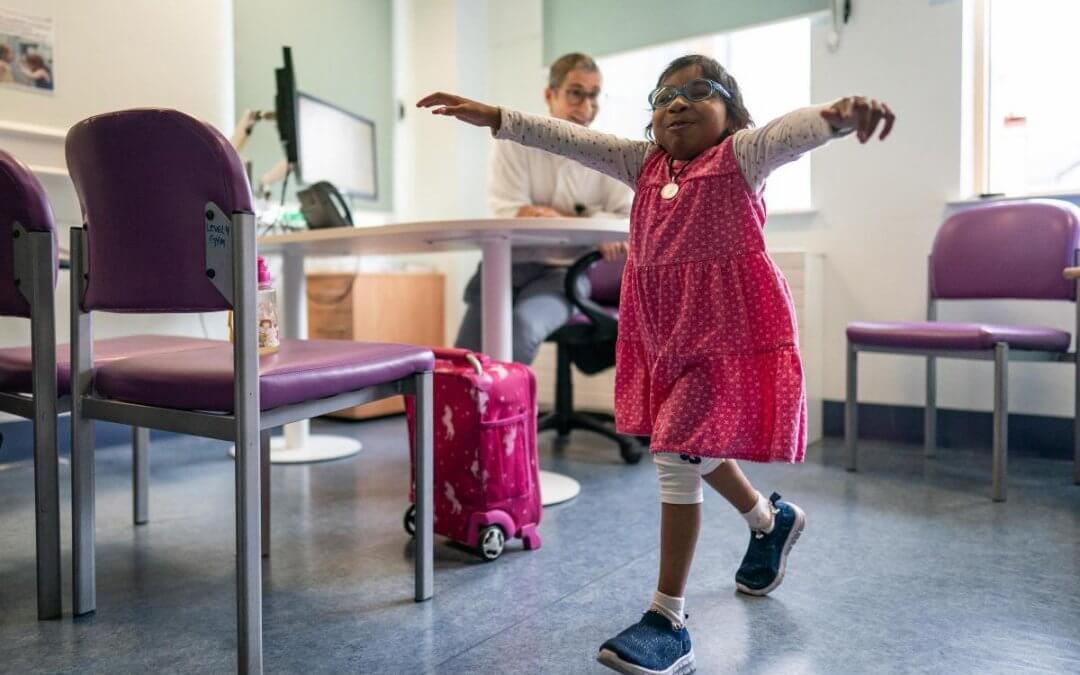Aditi Shankar is just eight years old, but she is a pioneer of British medicine thanks to a new way in which she has received a kidney transplant. But first, a little about the girl.
Aditi has the rarest form of dwarfism in the world, Schimke immuno-osseous dysplasia (SIOD). The condition is so rare that it affects only one in one to three million people worldwide. A genetic disorder, SIOD leads to sufferers needing hip transplants, bone marrow transplants, and kidney failure. Unfortunately, the life expectancy of those with this condition is incredibly short at 11 years of age.
The diagnosis of SIOD at five years of age meant that Aditi had to travel to Great Ormond Street Hospital for treatment at least three times a week.
Unfortunately, in March 2021, Aditi’s immune system was fragile, and her kidney function had rapidly decreased. And doctors were concerned that a kidney transplant in the traditional sense would not work. Great Ormond Street Hospital experts in nephrology, stem cell transplants, and immunology worked with peers worldwide to develop a treatment plan for Aditi. The solution was a double bone marrow transplant followed by a kidney transplant.
A bone marrow transplant, also known as a hematopoietic stem cell transplant, is a medical procedure where unhealthy or damaged bone marrow is replaced with healthy bone marrow stem cells. These stem cells can come from a donor (allogeneic transplant) or the patient’s own body (autologous transplant). This procedure often treats various conditions, including leukaemia, lymphoma, and certain genetic disorders, by replenishing the patient’s blood-forming cells and immune system. Once the new stem cells have grafted (been accepted), the bone marrow should function normally, producing new blood cells and creating a healthy immune system.
Aditi had to spend four weeks in intensive care following the bone marrow transplant and undergo continuous dialysis. Six months later, Aditi was well enough to receive a kidney transplant.
She spent a month on anti-rejection drugs. These medicines play a vital role in transplants. Immunosuppressants work by reducing the efficacy of the body’s immune system. This means that the body is less likely to attack the transplanted tissue as a foreign object and to accept it as the body’s own. Unfortunately, the caveat is that anyone taking these medicines is at an increased risk of complications such as infection as they live their lives being immuno-compromised.
Since Aditi’s transplanted kidney and bone marrow came from the same donor, she stopped taking anti-rejection drugs and became the first kidney transplant patient not to need immunosuppressants.
Speaking to the Daily Mail, Professor Stephen Marks, a children’s kidney specialist at Gosh, said
‘Because of her underlying immune condition, it meant she would not be able to receive a kidney transplant,’
‘Her immune deficiency had to be corrected by having mum’s bone marrow first, and because Aditi was able to accept her mum’s bone marrow, that meant her body could see her mum’s kidney as part of her.’
‘A month after the transplant, we were able to take her off all of her immunosuppression, which means she doesn’t get the side effects of the drugs.’
‘And now, one year after having had a bone marrow transplant and six months after having a kidney transplant, it is so heart-warming to see her having a good quality of life – going to the beach, singing, dancing, and also going to school and being able to do things that normal children do.’
Aditi is the first person to receive this type of treatment on the NHS, which the Professor acknowledged as “exciting”. However, he also warned that the risks of a double transplant were considerably higher. Thus, only those with similar conditions, like those who are immunocompromised, would be considered for future procedures.
Aditi’s transplant is an exciting step for regenerative medicine. With stem cells being used to bioengineer organs such as bladders for successful transplantation and kidneys created from stem cells in the lab, patients being able to grow their own organs and avoid immunosuppressants is closer than ever.









